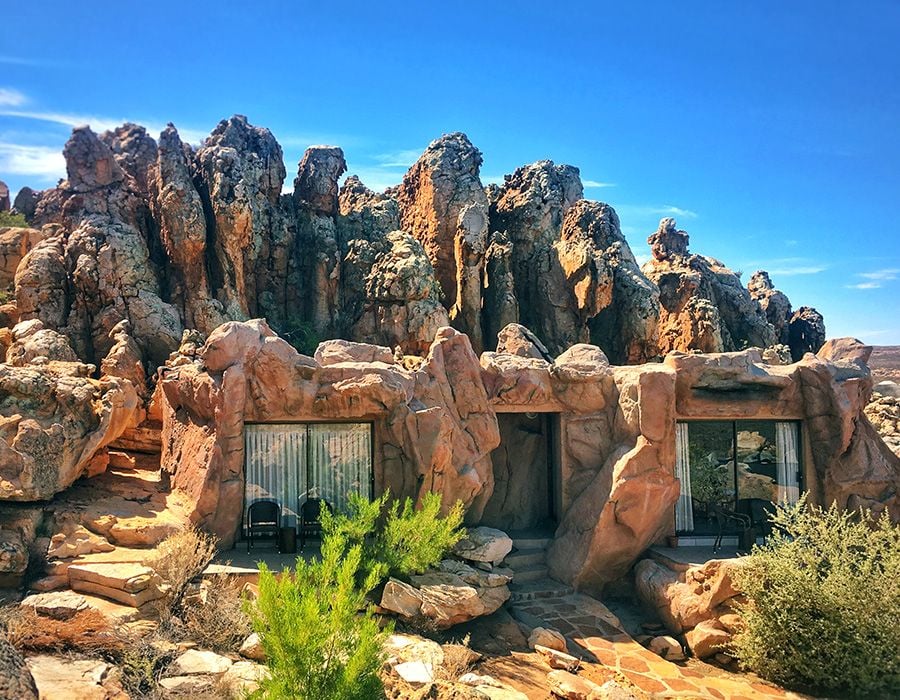The Cederberg Wilderness Area of South Africa lies around 155 miles (250km) north of Cape Town, but it feels worlds apart. The landscape is dominated by the Cederberg Mountains; rugged red-hued sandstone formations that rise up from the surrounding plains. They are named after the endangered Clanwilliam cedar trees, which are endemic to the area.
“The mountains actually predate the breakup of Gondwanaland. So we're talking about 130 million years of geological drama,” explains Dale Galloway, who works at Kagga Kamma Nature Reserve. “It’s an extraordinary, almost otherworldly landscape. There's a maze of these dramatic, sculpture-like sandstone rock formations that rise up in all directions. Sweeping plains, lots of rocky cliffs and deep valleys.”
The mountains actually predate the breakup of Gondwanaland. So we're talking about 130 million years of geological drama
At Kagga Kamma, it’s possible to sleep within this historic, stony landscape itself. Here, there are cave suites - ensuite rooms that have been hewn into the ancient rocks.
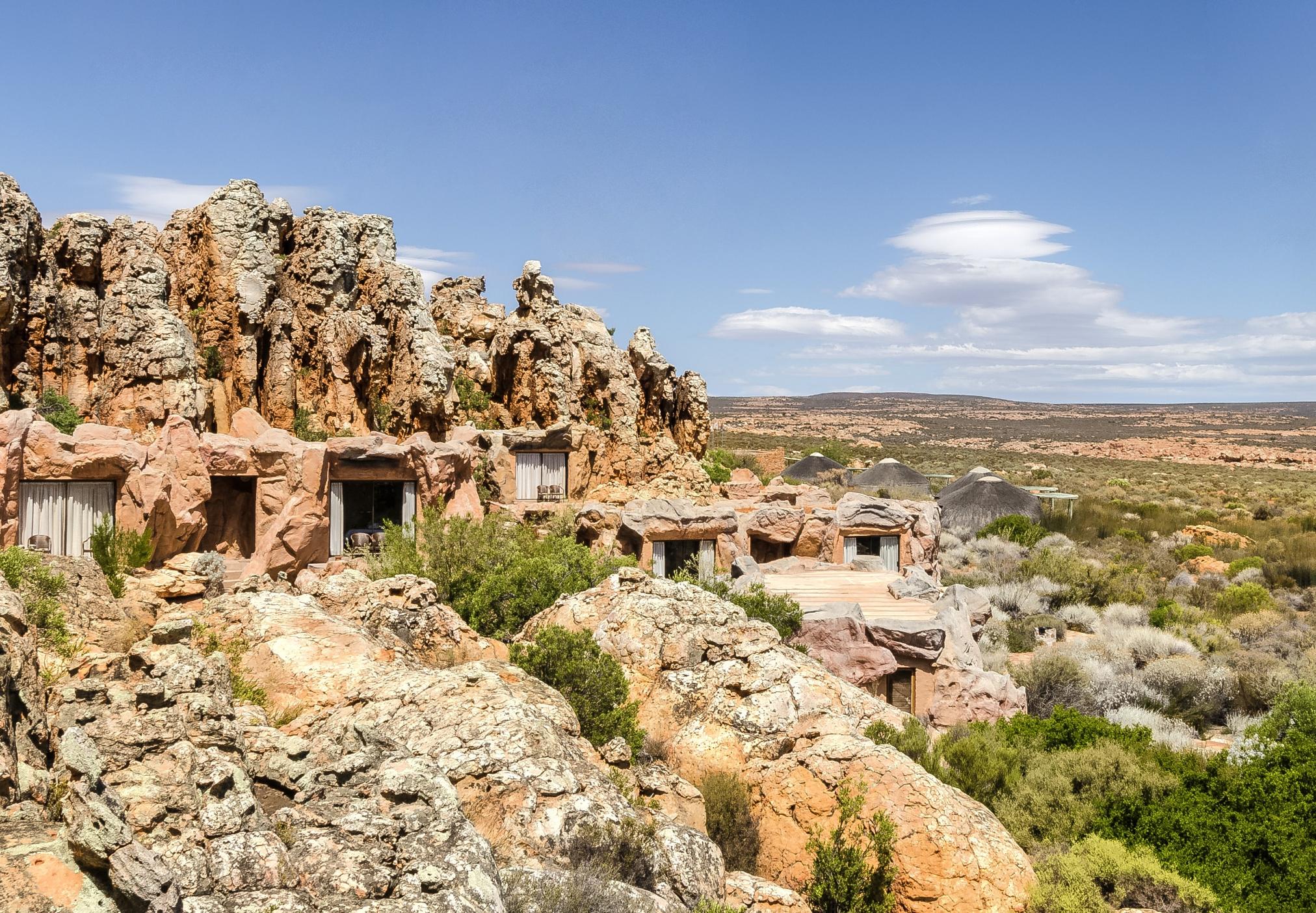
“The cave suites were designed to sit amongst the sandstone rock formations," says Dale. "The ceilings and the walls to a large extent are natural rock. They are all located for absolutely stunning views. So you look out from quite a high position out over the fynbos plains.”
From the cave suites, you’ll have panoramic views of the nature reserve, a private protected area of 15,000 hectares in the Cederberg region, and the ideal spot to immerse yourself in this unique landscape.

“This is also a place where two botanical kingdoms collide. So you have the endemic shrubland (fynbos) that meets the desert-adapted succulents of the Karoo biome,” says Dale. “Because the water is so scarce in summer here, we have plants that are literally adapted to poison the plants around them so that they're not competing for water.
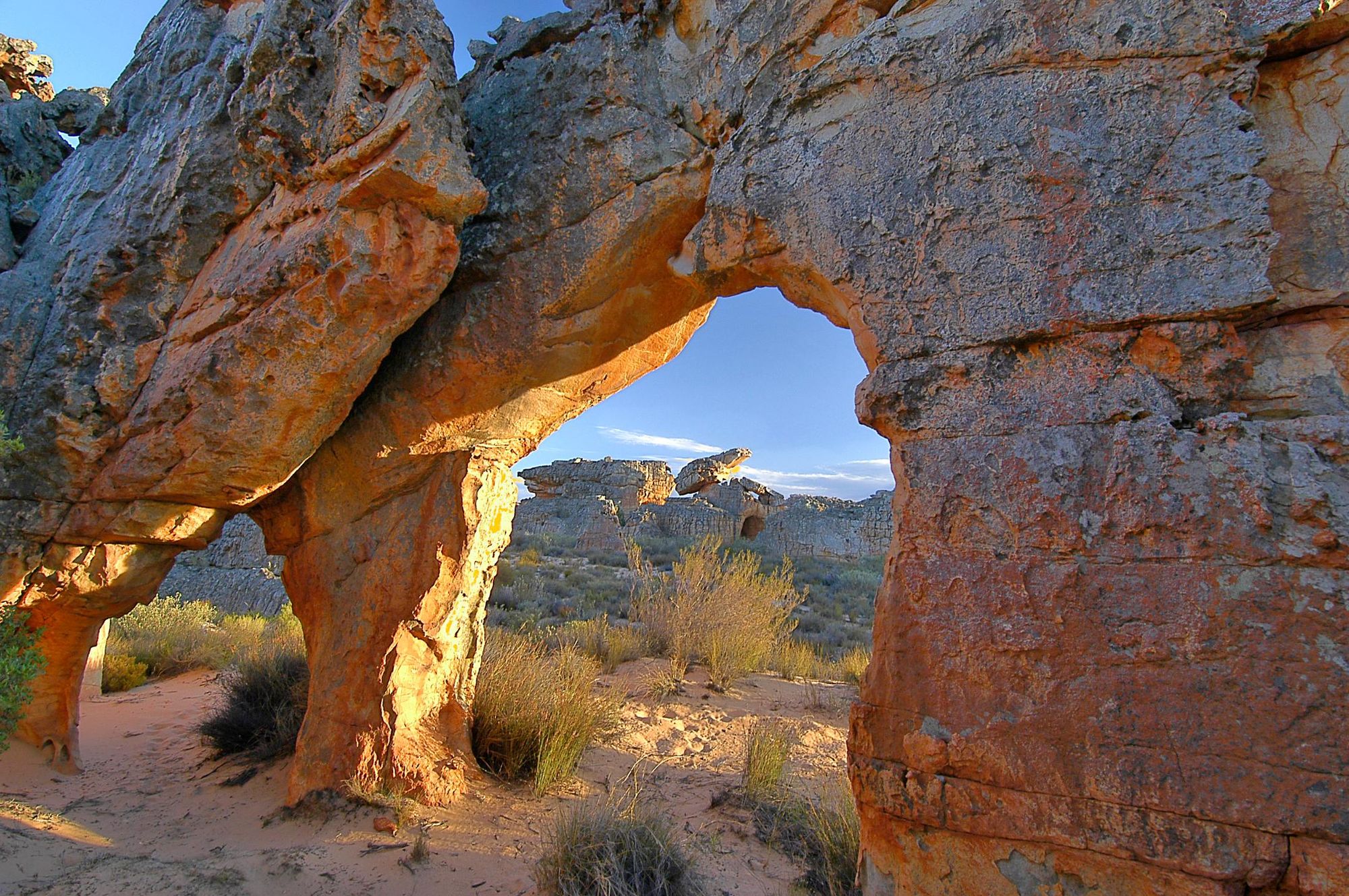
“In Kagga Kamma, you can see plenty of animals. Look out for elands, they move like ghosts through the morning mist, and zebras silhouetted against rust-red rocks. We have over 235 bird species.”
The Kagga Kamma Nature Reserve was created by three men who had been holidaying in the Cederberg since the 1960s, and ultimately had the opportunity to buy some land there in 1986. They built a small stone cottage on the property so that friends and family could visit. The reaction was so positive that they decided to open up the reserve to the public.
“The dream crystallised to share this transformative landscape while also protecting its stories, its ecosystems and its magic,” says Dale. “From very humble beginnings as a family holiday refuge, the reserve was slowly and sensitively developed into an eco lodge and reserve dedicated to preserving nature, celebrating ancient First People's cultures and reconnecting modern travellers with the magic of wild places.”
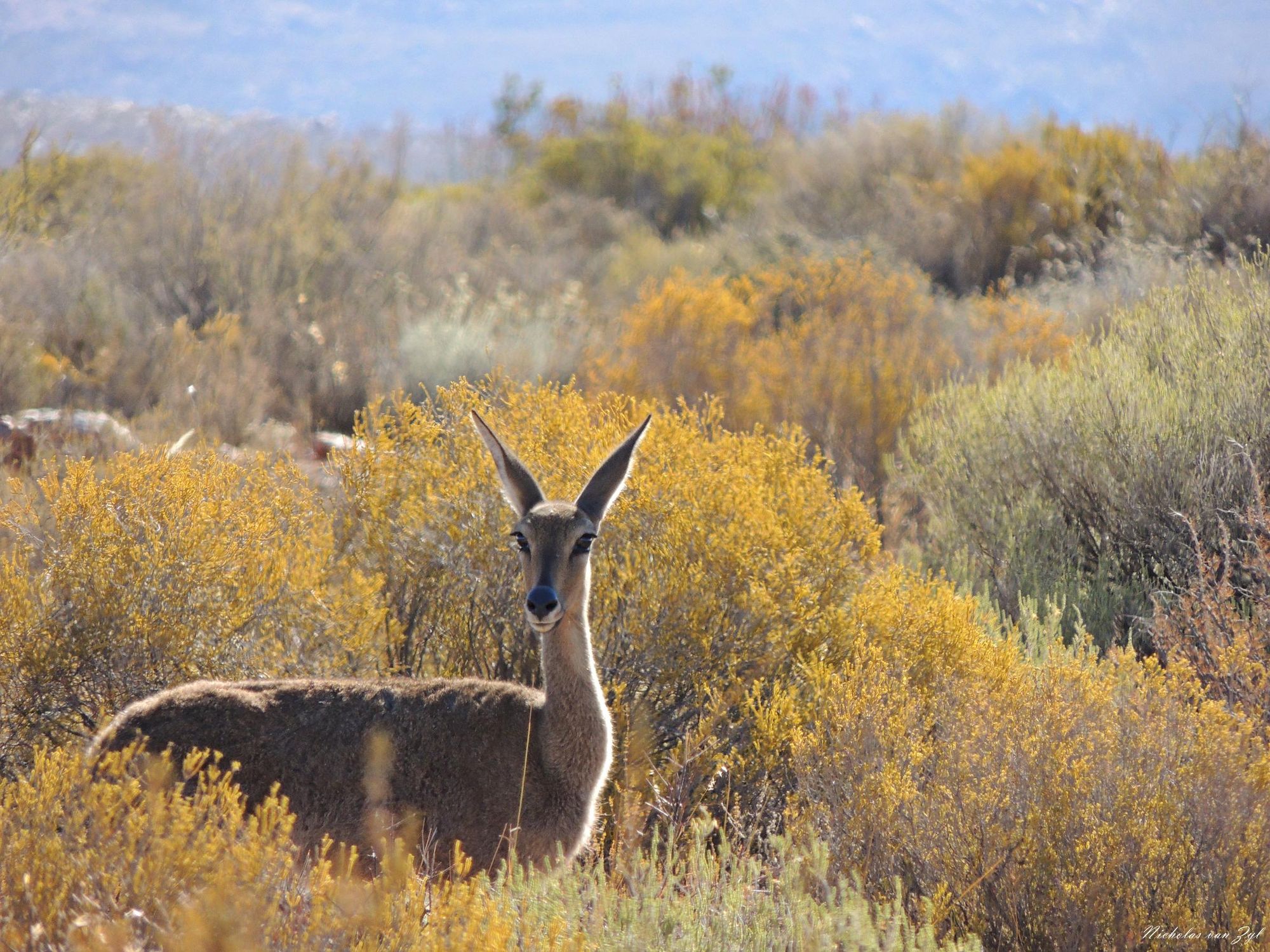
Kagga Kamma practices minimal impact tourism, meaning that only a small portion of the reserve has been developed – the rest has been rewilded through the introduction of indigenous antelope and the removal of invasive plant species.
“The reserve provides territory and safe corridors for rare and elusive Cape leopards,” Dale says. “Leopards are constantly on the move. Fences and urban development bar their way and push them out of areas. The Cape is highly farmed generally. So these remaining wilderness areas are really important, ecologically speaking.”
Kagga Kamma can be described as a living museum. It's rich in cultural and natural heritage
The reserve also has a rich cultural heritage. The Cederberg has been inhabited for years, first by the San people and later by the Khoi, semi-nomadic pastoralists. San rock art, dating back 6,000 years, has been found on the reserve. A 2,000-year-old Khoi pot was found by hikers on a rocky overhang, suggesting that there is plenty more to be discovered.

“I think in a way, Kagga Kamma can be described as a living museum. It's rich in cultural and natural heritage,” Dale says.
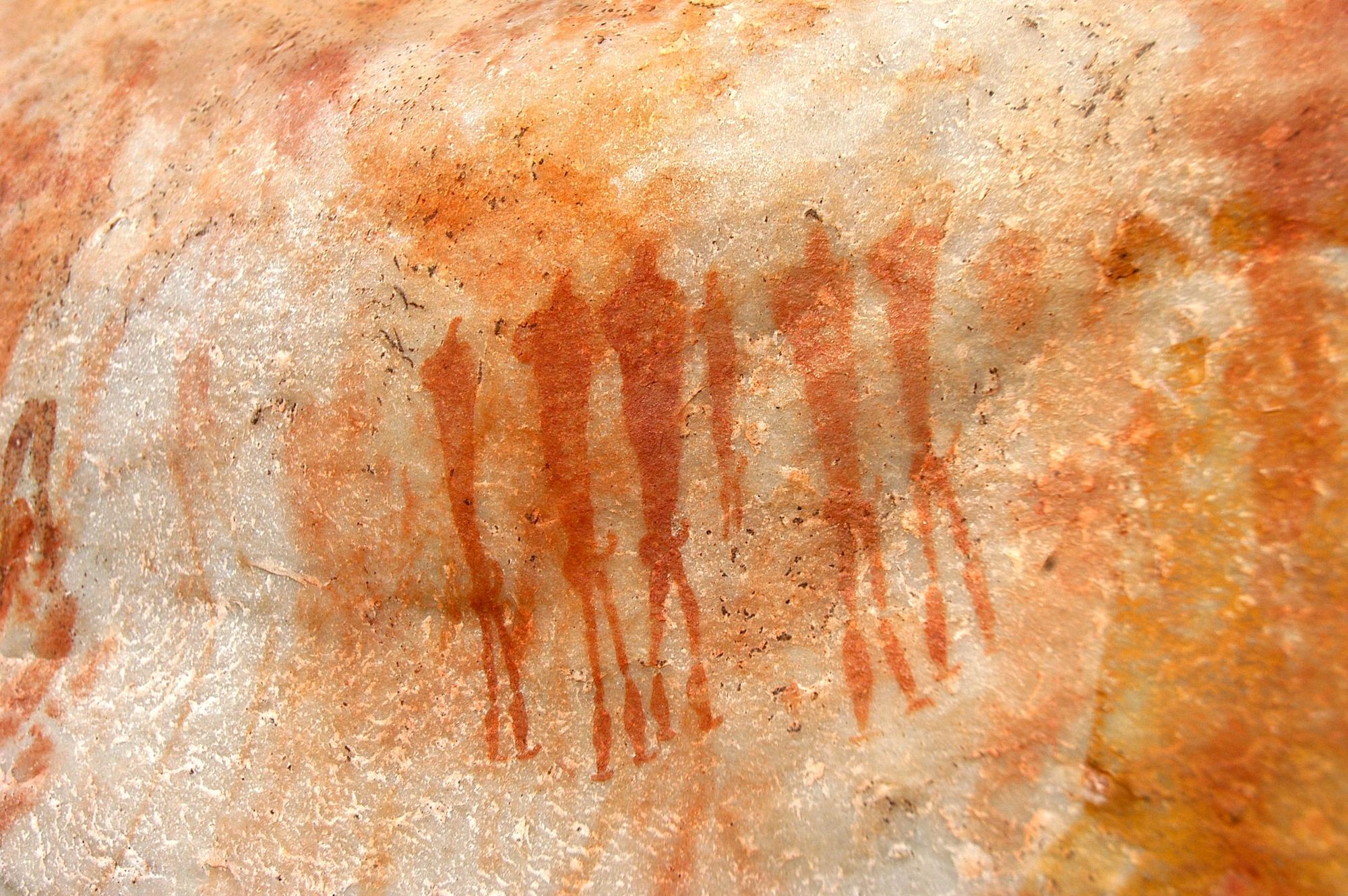
There are plenty of opportunities to explore the reserve, which has several different hiking and biking trails across the fynbos. Some take you to caves decorated with rock art, others to panoramic viewpoints where you can look out over the reserve. You can explore further afield on a guided 4x4 excursion, allowing you to appreciate the biodiverse nature of the reserve and see the majestic hulking shapes of the Cederberg Mountains.
At night, the Milky Way blazes in the sky above. Telescopes are available so you can take a closer look at the stars (with guides on hand to explain more about the constellations), or you can simply relax and enjoy the view.

“We have what are called Bortle 1 skies. Bortle is the international scale that they measure dark sky, clarity and visibility on – and 1 is the darkest sky you can get,” says Dale. “We really want our visitors to leave as passionate advocates for these kinds of wilderness spaces and for dark sky sanctuaries.”
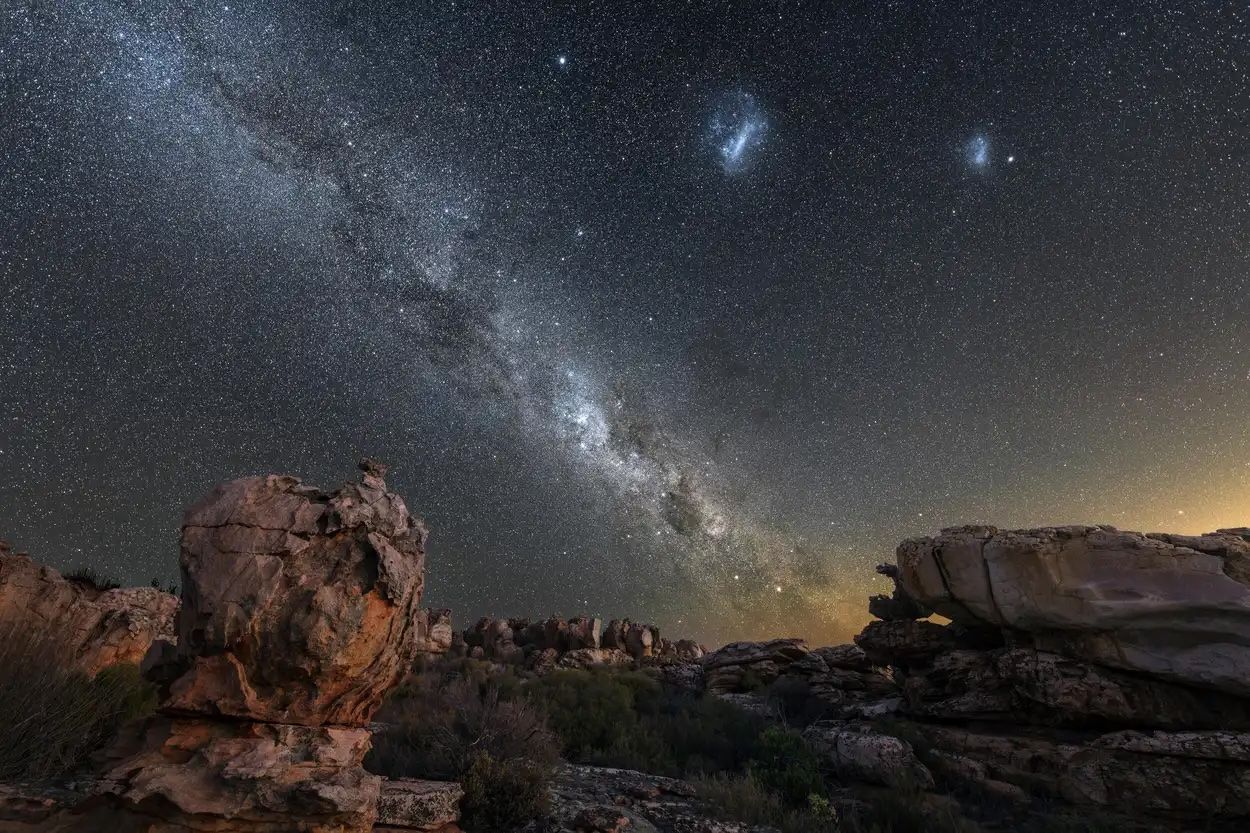
The accommodation at Kagga Kamma has been designed to leave as light a footprint as possible on the environment, and to blend in with the surrounding landscape. You can stay in Khoi-inspired wooden huts, the cave suites or open air suites, which are tucked into rocky overhangs and offer beautiful views of the stars, as well as private fire pits and hot tubs.
One of the things I love most about Kagga Kamma is the profound silence. It's like a whole other presence when you're there
You might be immersed in nature, but the facilities are far from rustic. The cave suites, for example, all have air conditioning, comfortable beds and private bathrooms.
This luxury doesn’t have a heavy carbon footprint. The retreat has been entirely off-grid since 2022, its electricity powered by a solar farm. Biodegradable cleaning products, locally-sourced ingredients and glass bottles over plastic are used. What’s more, Kagga Kamma employs people from the local community.
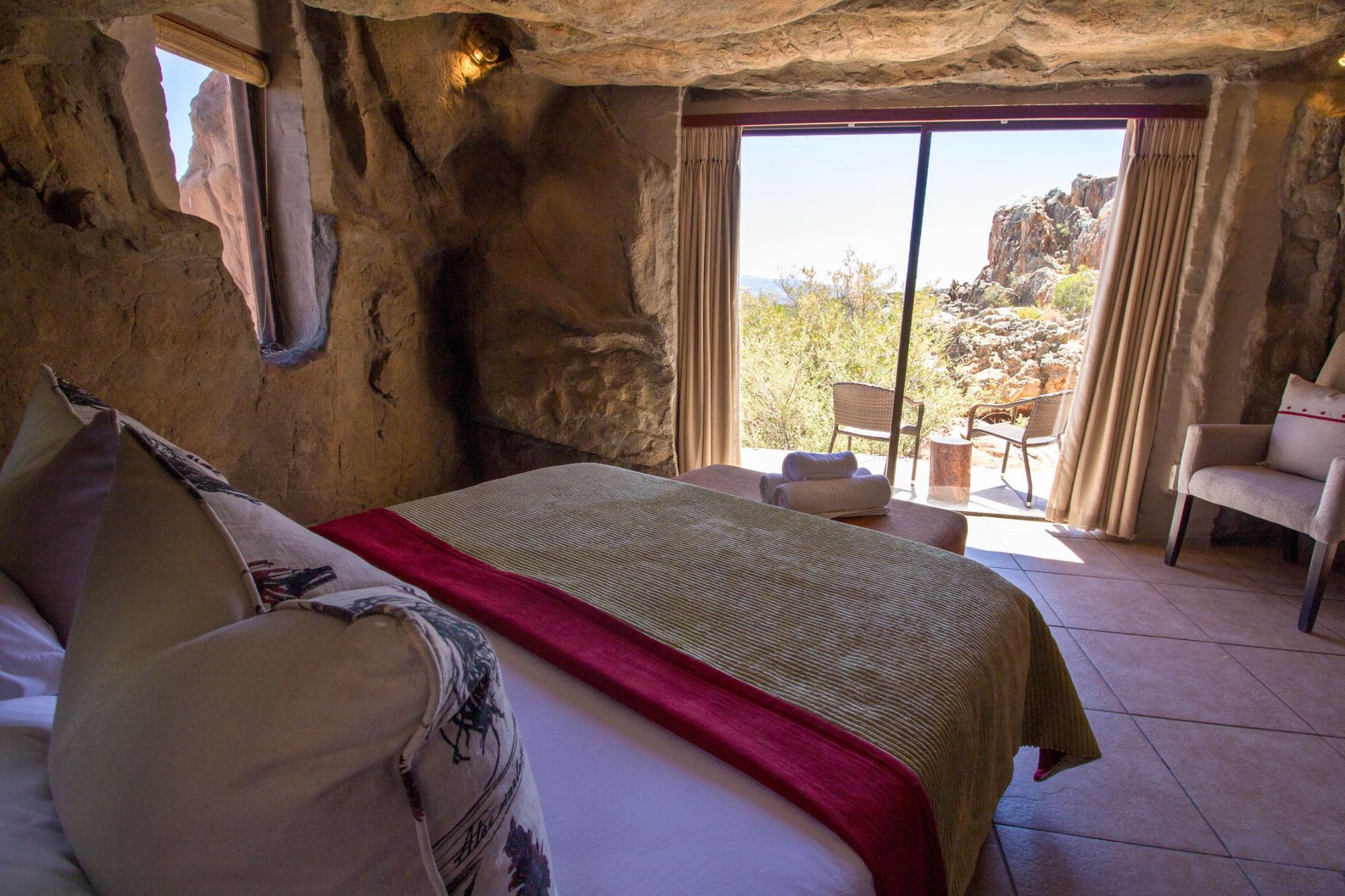
“I would say Kagga Kamma is a lifeline. We employ around 50 team members from the area, providing hospitality and employment. Because it's so remote, there are not even tiny little hamlets anywhere close. So the people living here are reliant on a very few options for employment,” Dale says.
Kagga Kamma, then, offers something both to the local community and to travellers who visit. To spend time here is to step into a landscape that feels ancient, untamed, and yet profoundly restorative.

“One of the things I love most about Kagga Kamma is the profound silence. It's like a whole other presence when you're there,” says Dale. “It's not so much silence as stillness, because you can hear the sound of the wind or the air moving in the fynbos and through the rocks. And you can hear the sound of birds and you can hear the sound of insects. But that's it. It's just this ringing stillness. It's wonderful.”
This silence serves as a powerful reminder that the most powerful luxury of all may simply be space, silence and vast starry skies.
Inspired? Visit the Kagga Kamma Nature Reserve on our Ultimate Adventure in South Africa, or check out our other Premium Adventures.


